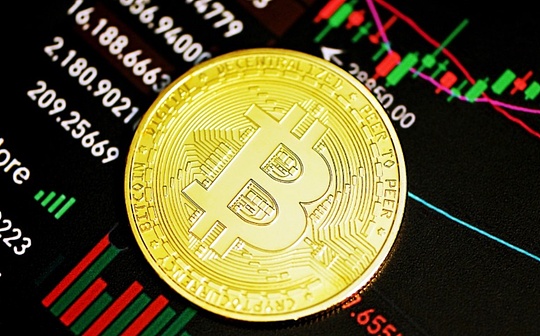
introduction
The U.S. financial markets are at a fragile balance in 2025, with Moody’s’ latest report revealing a double tightening of the corporate debt dilemma and the commercial real estate (CRE) market.Corporate debt default risk reached an 11-month high, commercial real estate loans hit record highs, while Fed policy signals show concerns about deteriorating economic fundamentals.Especially under the support of private equity, under the dual pressure of high interest rates and economic slowdown, companies are trying their best to avoid bankruptcy through means such as exchange of bad debts to delay price discovery.At the same time, banks retreated from commercial real estate loans and adopted a “extend and pretend” strategy to maintain the book value of assets and cover up potential losses.Fed governor Christopher Waller proposed a rate cut in July 2025 to deal with weak labor markets, but the move may not be enough to address structural problems.
This article combines the latest data in 2025 to analyze the current situation, causes and potential consequences of US corporate debt tightening and commercial real estate tightening, and evaluates their systemic risks to the financial system.
Current Situation of U.S. Debt Tightening
According to Moody’s July 2025 report, the number of U.S. companies entering the highest financial difficulties (minimum credit rating) reached an 11-month high, with the industrial and consumer goods industries being particularly serious, with 58 and 49 bankruptcy filings respectively, hitting a 15-year high.Factors that contribute to this include high borrowing costs (10-year Treasury yields approached 4.5% in May 2025), global trade uncertainty (such as tariff barriers), and slowing economic growth (2025 GDP growth forecasts lowered to 1.4%).Private equity-backed companies are particularly vulnerable, which have borrowed heavily in a low-interest rate environment after the 2008 financial crisis, with cumulative debt sizes of more than $1.2 trillion (according to PitchBook data), exacerbating leverage through stock buybacks or dividend refinancing.
To avoid the price discovery brought by bankruptcy, many businesses choose to exchange bad debts, i.e. extend debt maturity or adjust terms through out-of-court restructuring.Moody’s noted that this strategy allows companies to temporarily maintain book value, but delays the exposure of the real market value of assets.According to S&P Global data, the default rate of high-yield bonds has risen to 5.8% in the first half of 2025, the highest since 2020, and is expected to climb further to 6.5% by the end of the year.In addition, the widening of the federal deficit (Moody’s forecast to reach 9% of GDP by 2035) has pushed up Treasury yields, further squeezing corporate financing space, especially companies with lower credit ratings, whose interest coverage has fallen below pre-epidemic levels.
The debt tightening of US companies reflects structural problems caused by long-term low interest rate policies.Private equity masks inefficiency in business operations through financial engineering such as stock buybacks, but high interest rates and economic slowdowns have exposed these vulnerabilities.Although non-performing debt exchange can temporarily relieve stress, it cannot change the nature of over-leverage.Once the economy further deteriorates or market confidence shakes, mandatory price discovery may trigger a chain reaction, leading to revaluation of corporate asset values and investor panic.
The tightening of the commercial real estate market
The commercial real estate market is experiencing a crisis driven by structural and cyclical factors.In 2025, the default rate of US commercial mortgage-backed securities (CMBS) office properties reached 11.1%, a record high, exceeding the post-2008 financial crisis (according to Trepp data).This phenomenon stems from a decline in demand caused by remote work, the financing costs driven by high interest rates, and the continued decline in asset value.Data on the X platform pointed out that 44% of the $2 trillion in commercial real estate debt due by 2025 are held by banks, with office property loans being particularly prominent.
Data from the Federal Reserve System shows that banks have significantly reduced their lending exposure to commercial real estate since the beginning of 2024, especially construction and land development loans.FDIC’s first quarter 2025 report shows that the commercial real estate overdue and non-performing loan ratios of large banks reached 4.65%, the highest since 2014.Banks prefer to hold low-risk assets such as U.S. Treasury bonds to protect their capital adequacy ratio.This retreat reflects concerns about economic uncertainty, especially regional banks, whose commercial real estate loans account for as much as 40%-50% of assets (FDIC data).
Similar to corporate debt, the commercial real estate market generally adopts the “extended and pretend” strategy.Banks avoid defaults by modifying loan terms (such as extending maturity dates or reducing interest rates) and maintain the book value of assets.For example, a half-empty office building may still be priced at the pre-epidemic full rent value, delaying the recognition of losses.In 2023, the Federal Reserve, FDIC and OCC jointly encouraged banks to avoid the wave of defaults through loan restructuring, and this regulatory tolerance further fueled the market’s avoidance of price discovery.
The austerity of commercial real estate is an under-recognized crisis.High default rates and bank retreats indicate that the market is approaching a critical point, especially for office properties.The restructuring of loans allowed by regulators, while avoiding short-term crashes, has created a zombie market where asset value is disconnected from reality.Huge debt due by 2025 will force the market to face price discovery, which may lead to bank capital shortages and systemic risks to regional banks.
Fed’s policy response
Federal Reserve Director Christopher Waller proposed an early cut in July 2025, citing that the labor market is “on the edge”.The non-farm employment report in June 2025 showed 147,000 new jobs, but half of them came from the public sector, with the private sector performing weakly.The average weekly hours of production and non-management employees fell to the second lowest level since the pandemic, indicating a decline in consumer purchasing power.The Philadelphia Fed’s 2025 report further pointed out that although the overdue rate of bank loans is slightly lower than the historical high, the scale of debt write-offs hit a new high, reflecting the potential pressure in the credit market.
The Federal Reserve held the federal funds rate at 4.25%-4.50% in June, but economic forecasts were lowered: GDP growth forecasts fell from 1.7% to 1.4% in 2025, and core PCE inflation expectations rose from 2.8% to 3.1%.Waller’s proposal for a rate cut is in contrast to the cautious attitude of some officials, such as Mary Daly, but the Fed’s Beige Book focuses on layoffs without mentioning inflation, highlighting concerns about a slowdown.The head of the Los Angeles port recently warned that companies borrowing large amounts of debt to stockpile inventory due to fear of tariffs may further intensify financial pressure.
Waller’s proposal to cut interest rates shows that the Fed is beginning to face economic weakness, but monetary policy is difficult to solve the structural problems of corporate debt and commercial real estate.Rate cuts may push up stocks in the short term, but may also exacerbate inflation or further delay price discovery, extending market uncertainty.The Fed needs to find a balance between stimulating the economy and avoiding asset bubbles, and its historical lagging reaction may reduce policy effectiveness.
Systemic Risks of Private Equity
Private equity plays a key role in U.S. corporate debt crunch.After 2008, the low interest rate environment allowed private equity companies to borrow at low cost, with a cumulative debt of more than $1.2 trillion (PitchBook data).These companies achieve short-term gains by acquiring businesses and leveraging (such as stock buybacks or divestitures), but sacrifice long-term stability.In 2025, high interest rates and economic slowdowns exposed the vulnerability of these companies and increased risk of default.
Systemic risks stem from the association of private equity with corporate debt, banks and the broader financial markets.The bankruptcy of a high-profile company may trigger a reassessment of risks across the industry, leading to a chain reaction to the revaluation of asset value.Moody’s pointed out that companies with the lowest credit rating usually only have two ways of bankruptcy or restructuring, but the current market encourages parties to avoid these two options.
Excessive leverage of private equity is a time bomb whose opacity exacerbates systemic risks.Once the default wave is triggered, it may affect banks, bond markets and investor confidence.Regulators should reduce risks by mandatory disclosure of leverage levels and strengthening lending standards, otherwise a single event could trigger a systemic crisis similar to that of 2008.
The lack of price discovery and consequences
The lack of price discovery is the core issue of US corporate debt and commercial real estate tightening.Banks, businesses and regulators maintain overvalued assets through the “extension and pretend” strategy to avoid a large-scale asset sell-off in 2008.The FDIC report shows that banks have not realized bond losses of US$413.2 billion, and if commercial real estate loans are priced at market value, capital shortages may further expand.Corporate bankruptcy will also expose the true value of leveraged assets and may trigger market adjustments.
This strategy relies on hopes of a soft landing for the economy, but 2025 data — slowing GDP growth, weak labor markets, inflationary pressure — suggests that the outlook is slim.Once the price discovery occurs, whether through default, forced sale or regulatory intervention, it can lead to bank capital pressure and market turmoil.
The lack of price discovery creates false stability, but this vulnerability cannot be infinitely sustained.Regulatory tolerance and market optimism mask the true status of asset value, but maturing debt and economic slowdown will force the market to face reality.The arrival of price discovery could trigger systemic shocks, especially for regional banks and private equity investors.
in conclusion
The U.S. financial markets in 2025 are facing the dual challenges of corporate debt tightening and commercial real estate tightening.The excessive leverage of private equity, the wave of commercial real estate defaults under high interest rates, and the weak labor market together constitute a fragile financial ecosystem.The Fed’s possible signal for interest rate cuts reflects awareness of economic weaknesses, but cannot solve deep structural problems.Data such as rising CMBS default rate, bank withdrawals and expanding debt write-off scale show that the market is approaching the critical point.
Although the “extension and pretend” strategy delays the crisis, it increases systemic risks.A single event—such as a major bankruptcy or a wave of commercial real estate defaults—can break that balance, triggering asset revaluation and market turmoil.Policymakers need to respond to potential crises by increasing transparency, strengthening lending standards and responding to fiscal imbalances.Otherwise, the financial markets in 2025 may face a challenge beyond 2008, testing the resilience of the US economy.







